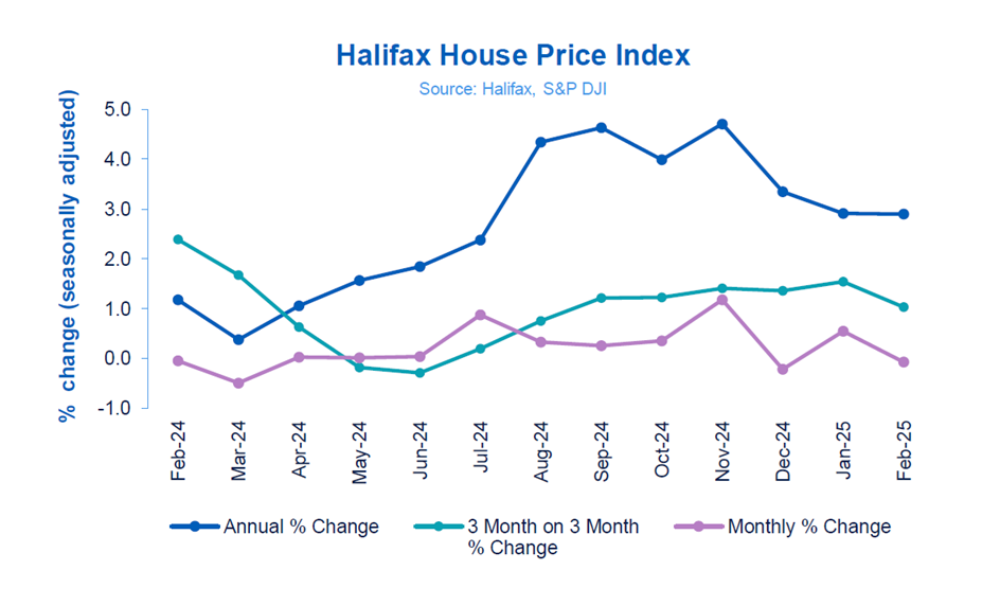Property prices expected to continue to rise this year

The UK housing market remained steady in February, with average property prices dipping slightly by 0.1% to £298,602, according to the latest Halifax House Price Index.
This follows a 0.6% increase in January. Annual house price growth held firm at 2.9%, unchanged from the previous month.
 “February’s figures highlight the delicate balance within the UK housing market,” commented Amanda Bryden (pictured left), head of mortgages at Halifax.
“February’s figures highlight the delicate balance within the UK housing market,” commented Amanda Bryden (pictured left), head of mortgages at Halifax.
“While there’s been talk of a last-minute rush on new mortgages ahead of the changes to Stamp Duty, inevitably we’ve seen some of the demand that was brought forward start to fade as the April deadline ticks closer, given the time needed to complete a purchase. That may help to explain why growth in first-time buyer property prices eased in February, falling to +2.4%, in contrast to homemover price inflation which accelerated, reaching +3.7%.
“While house price growth has slowed overall, market activity remains strong and comparable to pre-pandemic levels, demonstrating a resilience among buyers that’s been evident in the face of higher borrowing costs. While those affordability challenges persist, the ongoing shortage of housing supply coupled with sustained demand suggests property prices will continue to rise this year, albeit at a more measured pace compared to last year.”
Stephanie Daley (pictured centre), director of partnerships at mortgage advisor Alexander Hall, stated they had not seen a sign of market momentum slowing so far this year, with house prices remaining stable over the start of the year.
“While the impending Stamp Duty deadline has been a contributing factor behind an increased level of market activity, we’ve seen many buyers factor in a potential cost increase from the off, which suggests that any correction that does come as of April 1 will be minimal,” Daley said.
“Therefore, the expectation is that the market will continue to go from strength to strength as we approach the busy summer selling season, with buyer sentiment strengthened further by the prospect of further interest rate reductions.”
Amy Reynolds (pictured right), head of sales at Richmond estate agency Antony Roberts, also observed an increase in market activity following recent mortgage rate reductions.
“On the ground, we have noticed the recent drop in mortgage rates has boosted buyer confidence, but affordability continues to be the dominant factor,” she pointed out.
Reynolds also noted that more properties were coming to market as the weather improved, particularly family homes with gardens.
“Well-priced and well-presented homes are selling relatively quickly,” she added. “While buyers may be pausing to assess financial implications before taking the plunge, high-demand areas are retaining interest.”
Regional variations in house price growth
House price growth varied across the UK, with most regions seeing a slowdown. However, Scotland recorded its fastest growth in over a year, rising to 3.8% in February from 2.5% in January. The average property price in Scotland now stands at £213,014.
Northern Ireland continued to post the strongest annual growth at 5.9%, with average property prices reaching £205,784; while Wales saw house prices rise by 2.8% year-on-year, bringing the average property price to £226,811.
In England, Yorkshire and Humberside recorded the highest annual growth at 4.1%, the strongest since mid-2021. Average property prices in the region are now £216,130.
London’s house price growth slowed significantly, dropping from 2.6% in January to 1.6% in February. Despite this, the capital remains the most expensive region in the UK, with average property prices at £545,183.
Any thoughts on the latest Halifax House Price Index? Share them with us by leaving a comment in the discussion box at the bottom of the page.



